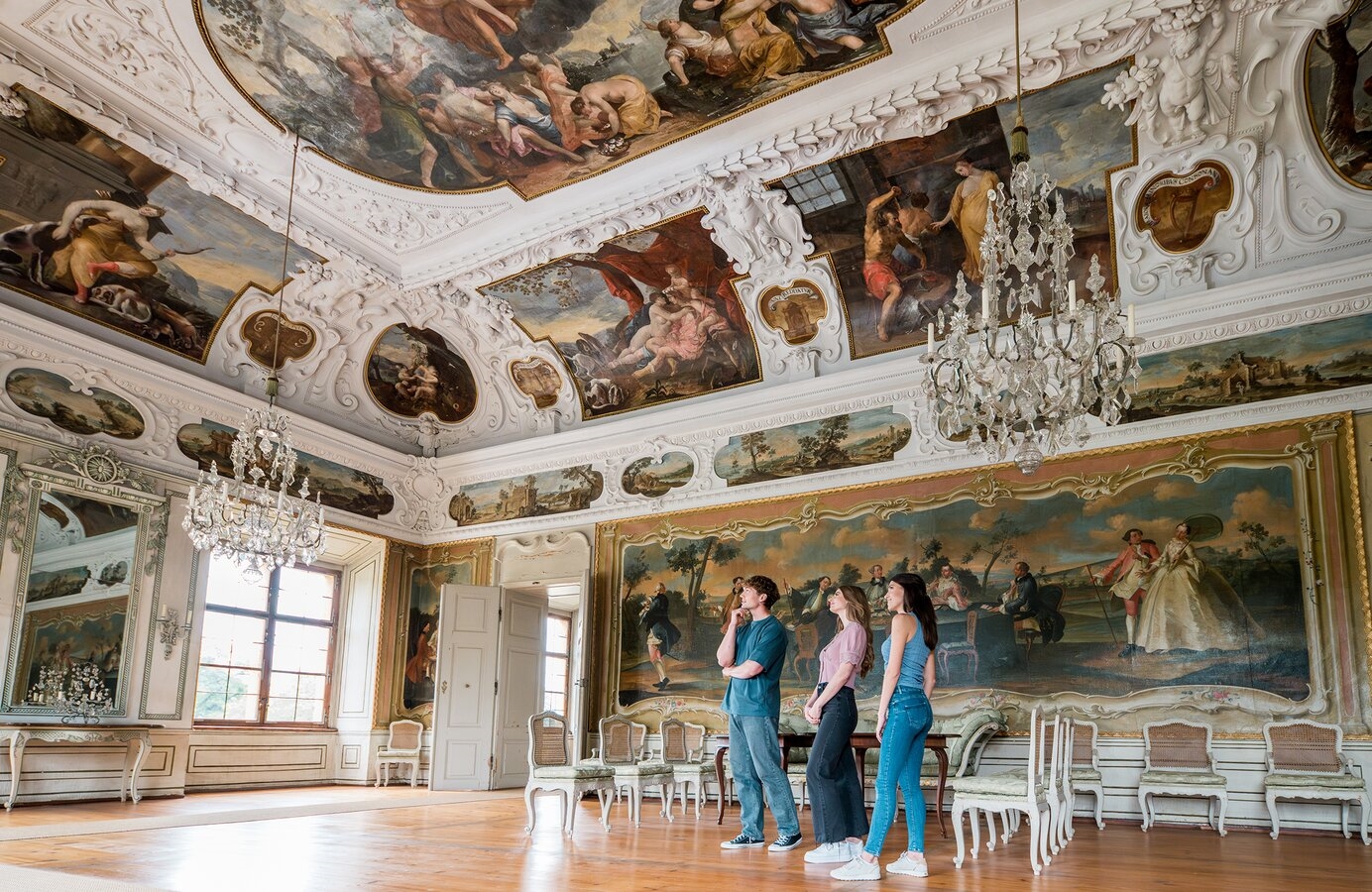Discovering Schloss Eggenberg’s Planetary Room
Nestled in the heart of Graz, Austria, Schloss Eggenberg is a stunning Baroque palace that offers visitors a glimpse into the opulence and grandeur of the past. Among its many treasures, the Planetary Room stands out as a must-see for anyone interested in art, history, or astronomy. This room is renowned for its breathtaking astronomical ceiling fresco, which is a masterpiece of Baroque art and a testament to the era’s fascination with the cosmos.
The Astronomical Ceiling Fresco
The Planetary Room’s ceiling fresco is a visual feast that captures the imagination of all who enter. Painted by the talented artist Hans Adam Weissenkircher in the late 17th century, the fresco is a vibrant depiction of the solar system as understood during the Baroque period. It features the seven classical planets—Mercury, Venus, Mars, Jupiter, Saturn, the Sun, and the Moon—each represented by their corresponding mythological deities. The fresco is not only a work of art but also a reflection of the scientific knowledge and cultural beliefs of the time.
Visitors to the Planetary Room can marvel at the intricate details and vivid colors of the fresco, which have been carefully preserved over the centuries. The artwork is a harmonious blend of science and mythology, showcasing the Baroque era’s unique approach to understanding the universe. As you gaze up at the ceiling, you’ll be transported back in time to an age when the mysteries of the cosmos were just beginning to be unraveled.
The Significance of the Planetary Room
The Planetary Room is more than just a beautiful space; it is a symbol of the intellectual curiosity and artistic innovation that characterized the Baroque period. The room was originally designed as a place for contemplation and study, where the aristocracy could ponder the mysteries of the universe and their place within it. The fresco serves as a reminder of the era’s fascination with astronomy and the desire to explore the unknown.
In addition to its artistic and historical significance, the Planetary Room also offers insight into the cultural and philosophical beliefs of the time. The depiction of the planets as mythological figures reflects the Baroque era’s tendency to blend science with mythology, creating a rich tapestry of knowledge and imagination. This unique approach to understanding the cosmos is what makes the Planetary Room such a fascinating and enduring attraction.
Visiting Schloss Eggenberg
A visit to Schloss Eggenberg is a journey through time, offering a glimpse into the lives of the aristocracy and the cultural achievements of the Baroque period. The palace is a UNESCO World Heritage site and is considered one of the most important cultural landmarks in Austria. In addition to the Planetary Room, visitors can explore the palace’s many other rooms, each filled with exquisite art and historical artifacts.
When planning your visit, be sure to check the opening hours and any special events or exhibitions that may be taking place. Guided tours are available and provide valuable insights into the history and significance of the palace and its many treasures. Whether you’re an art enthusiast, a history buff, or simply curious about the wonders of the universe, a visit to Schloss Eggenberg and its Planetary Room is sure to be a memorable experience.
